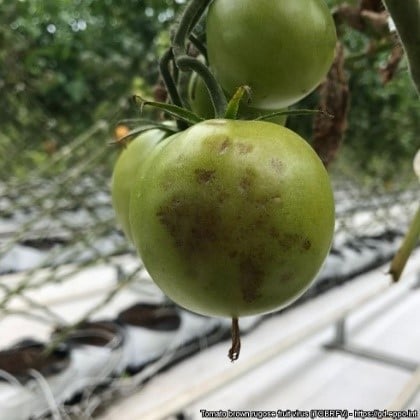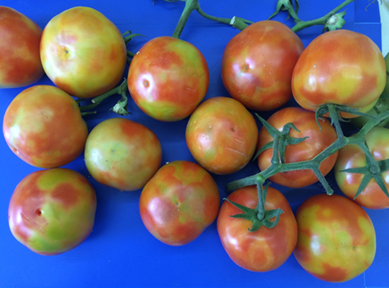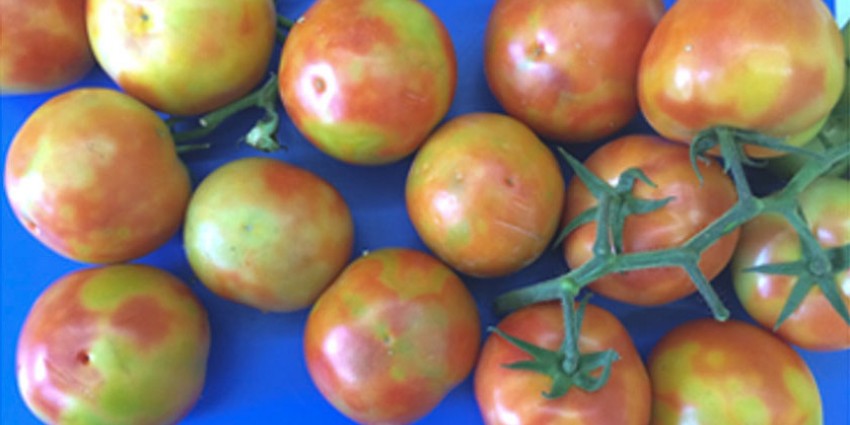
Tomato brown rugose fruit virus
Tomato brown rugose fruit virus (ToBRFV) is a highly-contagious plant virus that affects tomato, capsicum and chilli. ToBRFV was detected in greenhouse-grown tomatoes in South Australia in August 2024. This disease is not known to occur in Western Australia and must be reported if found or suspected to be present to prevent its entry and spread in the State.
Which plants are affected?
Major hosts include tomato, capsicum and chilli. Weeds can act as reservoirs for ToBRFV without showing obvious symptoms. In Israel, ToBRFV was found on 2 weedy species - black nightshade (Solanum nigrum) and nettle-leaved goosefoot (Chenopodium murale).
What do I look for?
- On tomato, symptoms include pale or yellow, mosaic and mottled leaves with occasional leaf narrowing.
- Rotten-looking spots may appear on flower stalk, calyces and leaf stalks.
- Fruit show yellow or brown wrinkled spots, and red-green marbling/discolouration.
- Fruits may be deformed and have irregular maturation.
- On capsicum, symptoms include deformed, yellow and mosaic leaves.
- Capsicum fruits are deformed, with yellow or brown areas or green stripes.

How does the disease spread?
ToBRFV is easily spread through:
- Infected propagative material (seeds, plants for planting, grafts, cuttings).
- Direct plant to plant contact.
- Contaminated tools, hands, clothes, trellis wires, greenhouse benches and planting trays.
- Seed, plant debris and contaminated soil for months or even years.
Infected weeds such as blackberry nightshade Solanum nigrum and nettle-leaved goosefoot Chenopodium murale can act as reservoirs allowing the virus to remain viable between growing seasons.
What damage can this disease cause?
ToBRFV can cause yield losses of up to 70% and reduce marketable fruit yield by 10 to 15%. The virus easily overcomes resistance genes in tomato and capsicum plants that are commonly used against other serious Tobamoviruses.
Status in WA
ToBRFV is absent from WA and is a quarantine pest. It is a prohibited organism under section 12 of the Biosecurity and Agriculture Management Act 2007. WA's Pest Freedom for ToBRFV is supported by general surveillance to prevent its entry. A person who finds or suspects the presence of ToBRFV must report it to the department.
-
Tomato brown rugose fruit virus - factsheetpdf (818 KB)

